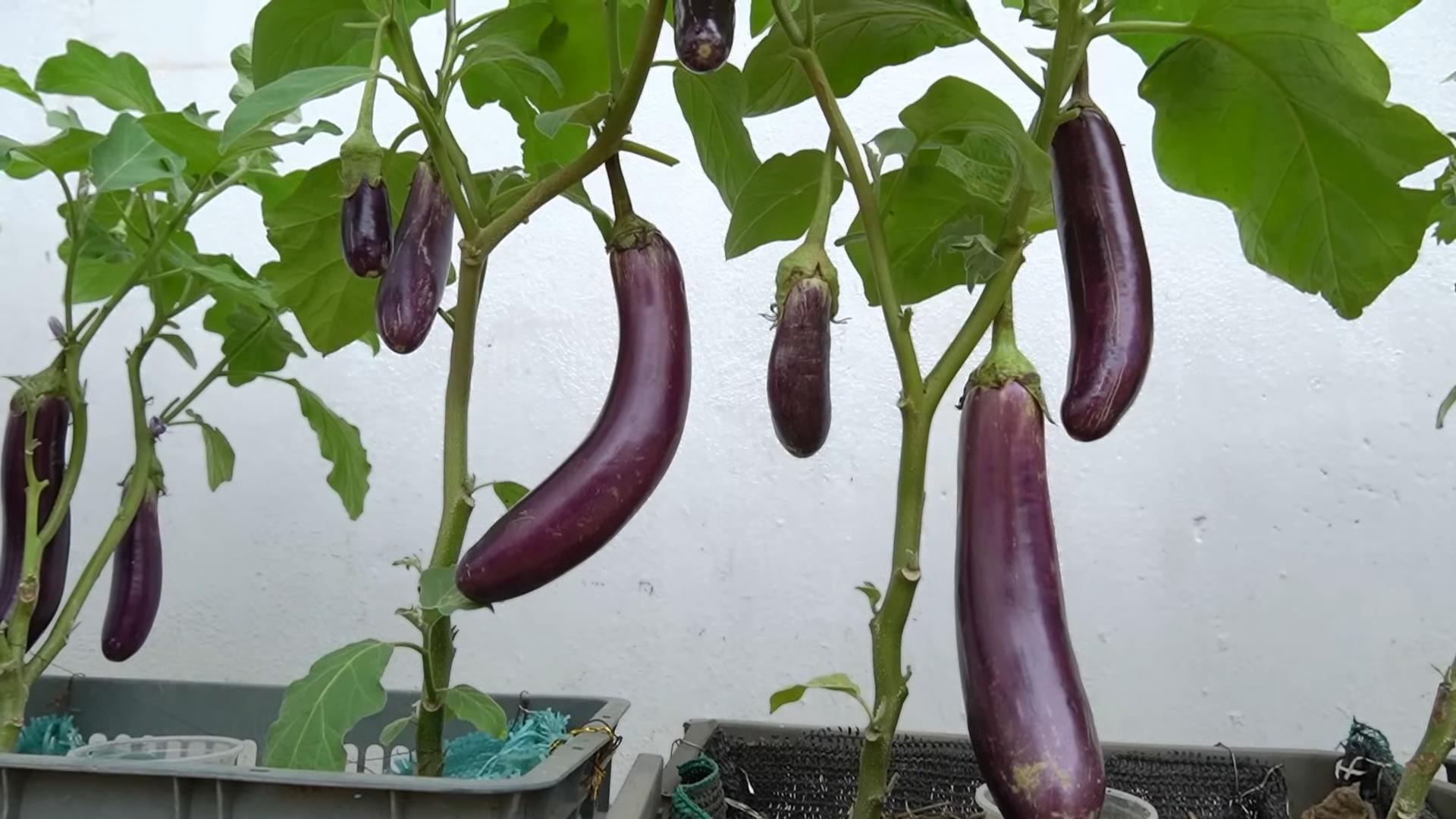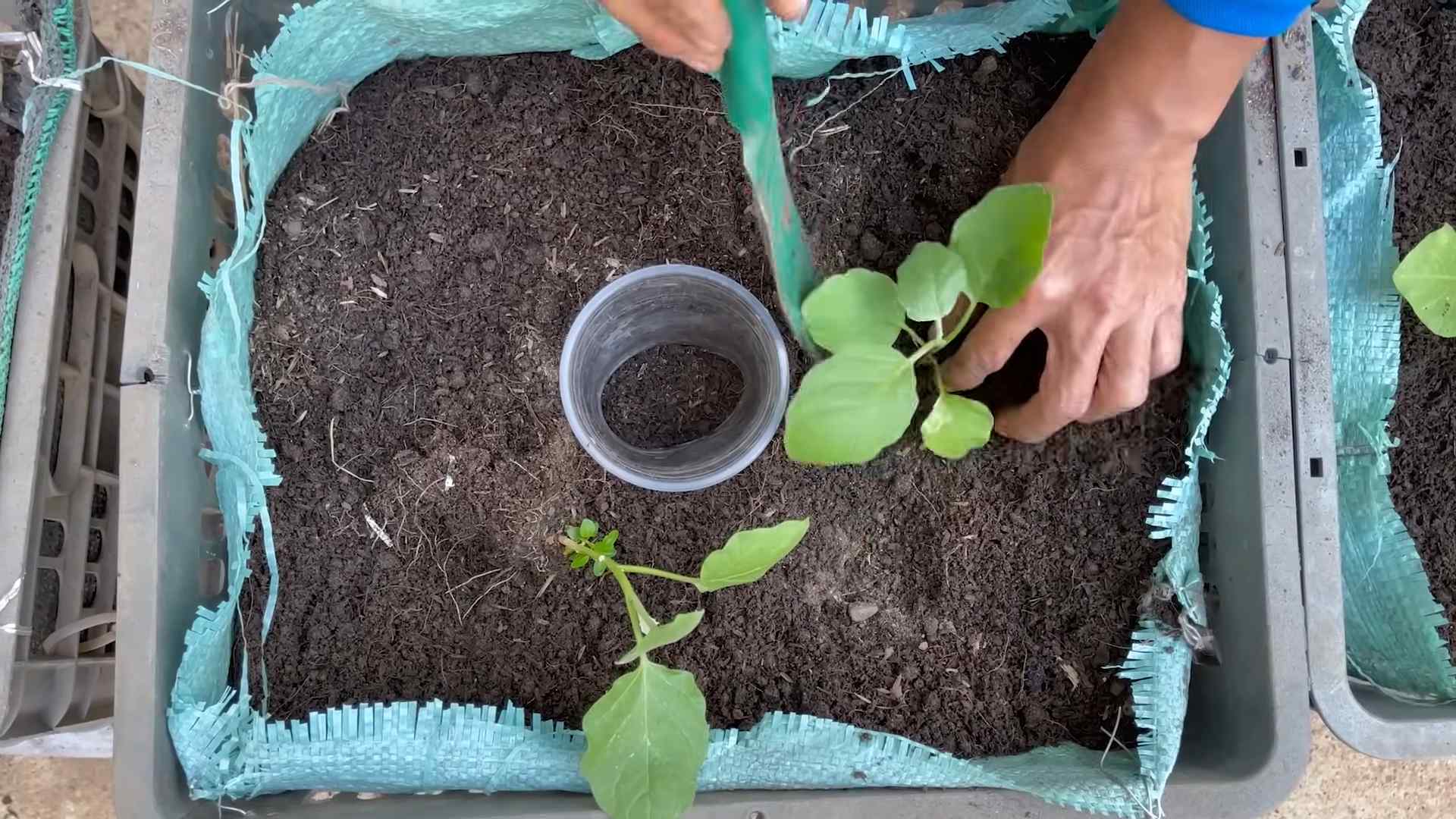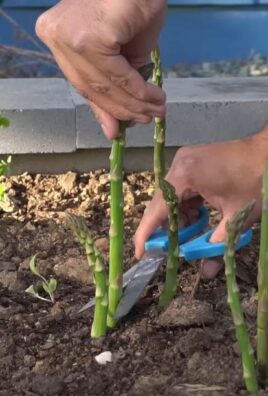Eggplant growing shortcuts – who doesn’t want them? Imagine biting into a perfectly grilled eggplant, grown right in your backyard, bursting with flavor. Sounds idyllic, right? But let’s be honest, growing eggplants can sometimes feel like a Herculean task. From battling pests to ensuring proper pollination, it can be a bit overwhelming. That’s where these DIY tricks and hacks come in!
For centuries, eggplants have been a staple in cuisines around the world, particularly in Asia and the Mediterranean. They were once considered exotic and ornamental, but now, they are a beloved ingredient in countless dishes. But, let’s face it, not everyone has the time or space for traditional, labor-intensive gardening methods. That’s why I’m so excited to share these simple, effective eggplant growing shortcuts that will help you achieve a bountiful harvest, even if you’re a beginner gardener or short on space.
This article is packed with easy-to-implement DIY solutions that address common eggplant growing challenges. We’ll cover everything from seed starting secrets to natural pest control methods, all designed to save you time, money, and frustration. So, ditch the complicated gardening guides and get ready to unlock the secrets to growing delicious, homegrown eggplants with these clever DIY tricks!

Growing Eggplant Like a Pro: My Favorite Time-Saving Hacks!
Okay, eggplant lovers, let’s get real. Growing these gorgeous, glossy purple beauties can sometimes feel like a marathon, not a sprint. But fear not! I’ve spent years experimenting in my garden, and I’m here to share my absolute favorite shortcuts to get you harvesting delicious eggplants faster and with less fuss. These aren’t just random tips; they’re tried-and-true methods that have seriously boosted my eggplant game. Let’s dive in!
Choosing the Right Variety: Speeding Up the Process from the Start
The first, and perhaps most crucial, step to a quicker eggplant harvest is selecting the right variety. Not all eggplants are created equal! Some take forever to mature, while others are practically begging to be picked.
* Look for “early” or “fast-maturing” varieties: Seed packets and plant labels will often indicate the days to maturity. Aim for varieties that mature in 60-70 days, rather than 80-90. This can shave weeks off your waiting time!
* Consider smaller fruited varieties: Generally, smaller eggplants like ‘Fairy Tale’ or ‘Little Fingers’ tend to mature faster than larger globe types like ‘Black Beauty’. Plus, they’re often more prolific!
* My personal favorites: I’ve had great success with ‘Patio Baby’ (perfect for containers and super early), ‘Hansel’ (beautiful and productive), and ‘Orient Express’ (a classic for a reason – it’s fast!).
Starting Seeds Indoors: Giving Your Eggplants a Head Start
Eggplants are heat-loving divas, and they need a long growing season. Starting your seeds indoors is non-negotiable if you want an early harvest, especially if you live in a cooler climate.
* When to start: Aim to start your seeds 6-8 weeks before your last expected frost. I usually start mine in late February or early March.
* What you’ll need:
* Seed starting trays or small pots
* Seed starting mix (this is crucial – regular potting soil is too heavy)
* Heat mat (optional, but highly recommended)
* Grow lights (essential for strong, healthy seedlings)
* Spray bottle
* Step-by-step instructions:
1. Moisten the seed starting mix: Before filling your trays or pots, thoroughly moisten the seed starting mix. It should be damp, but not soggy.
2. Sow the seeds: Plant 2-3 seeds per cell or pot, about ¼ inch deep.
3. Cover and warm: Gently cover the seeds with more seed starting mix and lightly mist with water. Place the trays on a heat mat and cover with a humidity dome (or plastic wrap) to create a warm, humid environment.
4. Provide light: Once the seeds germinate (usually within 7-10 days), remove the humidity dome and place the trays under grow lights. Keep the lights on for 14-16 hours per day.
5. Water carefully: Water the seedlings from the bottom by placing the trays in a shallow dish of water. This prevents damping off, a common fungal disease that can kill young seedlings.
6. Thin the seedlings: Once the seedlings have their first true leaves (the second set of leaves after the initial seed leaves), thin them to one strong seedling per cell or pot. Snip off the weaker seedlings at the soil line with scissors. Don’t pull them out, as this can disturb the roots of the remaining seedling.
Hardening Off: Preparing Your Seedlings for the Great Outdoors
Before transplanting your eggplant seedlings into the garden, you need to “harden them off.” This process gradually acclimates them to the outdoor environment, preventing transplant shock.
* The process: Over a period of 7-10 days, gradually expose your seedlings to outdoor conditions. Start by placing them in a sheltered spot for an hour or two each day, gradually increasing the amount of time they spend outside. Protect them from direct sunlight, strong winds, and frost.
* Important note: If the weather is particularly harsh (e.g., heavy rain, strong winds), bring the seedlings back inside.
Transplanting: Setting Your Eggplants Up for Success
Transplanting is a critical step, and doing it right can significantly impact your eggplant’s growth and yield.
* When to transplant: Wait until all danger of frost has passed and the soil has warmed up to at least 60°F (15°C). Eggplants are extremely sensitive to cold temperatures.
* Choosing the right location: Eggplants need at least 6-8 hours of direct sunlight per day. Choose a location with well-drained soil that is rich in organic matter.
* Soil preparation: Amend the soil with compost or well-rotted manure before planting. This will provide essential nutrients and improve drainage.
* The transplanting process:
1. Dig the holes: Dig holes that are slightly larger than the root balls of your seedlings. Space the holes about 2-3 feet apart.
2. Add fertilizer: Add a handful of slow-release fertilizer to each hole. I like to use a fertilizer specifically formulated for tomatoes and vegetables.
3. Gently remove the seedlings: Carefully remove the seedlings from their pots, being careful not to damage the roots. Gently loosen the roots if they are tightly bound.
4. Plant the seedlings: Place the seedlings in the holes and backfill with soil. Make sure the top of the root ball is level with the surrounding soil.
5. Water thoroughly: Water the seedlings thoroughly after planting.
6. Mulch: Apply a layer of mulch around the plants to help retain moisture, suppress weeds, and regulate soil temperature. I prefer organic mulches like straw or wood chips.
Fertilizing: Fueling Rapid Growth and Abundant Fruit
Eggplants are heavy feeders, meaning they need a consistent supply of nutrients to thrive. Regular fertilization is essential for a bountiful harvest.
* Types of fertilizer: You can use either organic or synthetic fertilizers. I prefer organic options like compost tea, fish emulsion, or seaweed extract.
* Fertilizing schedule:
* At planting: As mentioned above, add a slow-release fertilizer to the planting hole.
* Every 2-3 weeks: Begin fertilizing with a liquid fertilizer 2-3 weeks after transplanting. Follow the instructions on the fertilizer label.
* During fruiting: Increase the frequency of fertilization once the plants start producing fruit.
Watering: Keeping Your Eggplants Hydrated
Consistent watering is crucial for healthy eggplant growth and fruit production.
* Water deeply and regularly: Water deeply whenever the top inch of soil feels dry to the touch. Avoid overhead watering, as this can promote fungal diseases.
* Use a soaker hose or drip irrigation: These methods deliver water directly to the roots, minimizing water waste and reducing the risk of disease.
* Monitor soil moisture: Pay close attention to soil moisture, especially during hot, dry weather.
Pruning: Encouraging Bushier Growth and More Fruit
Pruning eggplants can seem intimidating, but it’s actually quite simple and can significantly improve your harvest.
* Why prune? Pruning helps to improve air circulation, reduce disease, and encourage the plant to focus its energy on producing fruit.
* How to prune:
* Remove suckers: Suckers are small shoots that grow from the base of the plant. Remove these regularly to prevent them from draining energy from the main plant.
* Pinch off lower leaves: Remove any yellowing or damaged leaves from the bottom of the plant. This will improve air circulation and prevent disease.
* Pinch off growing tips: Once the plant has reached a desired size, pinch off the growing tips to encourage branching and more fruit production.
* Remove excess fruit: If the plant is overloaded with fruit, remove some of the smaller or misshapen eggplants. This will allow the plant to focus its energy on producing larger, healthier fruit.
Pest and Disease Control: Protecting Your Precious Eggplants
Eggplants are susceptible to a variety of pests and diseases, but with a little vigilance, you can keep them healthy and productive.
* Common pests:
* Flea beetles: These tiny beetles can chew small holes in the leaves. Cover young plants with row covers to protect them.
* Aphids: These small, sap-sucking insects can weaken plants. Spray them with a strong stream of water or insecticidal soap.
* Tomato hornworms: These large caterpillars can quickly defoliate plants. Handpick them off the plants and drop them into a bucket of soapy water.
* Common diseases:

Conclusion
So, there you have it! These eggplant growing shortcuts aren’t just about saving time; they’re about maximizing your yield and enjoying the freshest, most flavorful eggplants possible, straight from your own garden. We’ve covered everything from seed starting hacks to pest control strategies that will give you a significant edge in your eggplant-growing journey.
Think about it: no more endlessly waiting for seedlings to sprout, no more battling relentless pests without a plan, and no more wondering if you’re giving your eggplants the nutrients they need. These shortcuts empower you to take control and cultivate a thriving eggplant patch, even if you’re short on time or experience.
But the real beauty of these techniques lies in their adaptability. Feel free to experiment! For instance, if you’re using coffee grounds as a fertilizer, try mixing in some banana peels for an extra potassium boost. If you’re struggling with specific pests, research companion plants that can naturally repel them. Consider interplanting basil or marigolds near your eggplants; their strong scents can deter many common garden pests.
And don’t be afraid to get creative with your supports. While tomato cages work well, you could also use sturdy stakes and twine to create a custom support system tailored to the specific needs of your eggplant varieties. For smaller varieties, a simple trellis might suffice.
The key is to observe your plants, learn from your experiences, and adapt these shortcuts to fit your unique growing conditions. Remember, gardening is a journey, not a destination. There will be successes and setbacks, but with a little knowledge and a willingness to experiment, you can overcome any challenge.
We truly believe that these eggplant growing shortcuts will revolutionize your gardening experience. They’re simple, effective, and, most importantly, they’ll help you grow the most delicious eggplants you’ve ever tasted.
Now, it’s your turn! We encourage you to try these shortcuts in your own garden and see the difference they can make. Share your experiences with us in the comments below. We’d love to hear about your successes, your challenges, and any variations you’ve discovered along the way. Let’s build a community of eggplant enthusiasts, sharing our knowledge and helping each other grow the best eggplants possible!
Don’t delay, start implementing these eggplant growing shortcuts today and prepare to be amazed by the results. Happy gardening!
Frequently Asked Questions (FAQ)
What are the most common problems people face when growing eggplants, and how do these shortcuts address them?
Many gardeners struggle with slow germination, pest infestations, nutrient deficiencies, and lack of support for heavy fruits. These eggplant growing shortcuts directly tackle these issues. For example, the seed starting hacks accelerate germination. Using coffee grounds and banana peels provides essential nutrients, reducing the risk of deficiencies. Companion planting and natural pest control methods minimize pest problems. Finally, providing adequate support prevents branches from breaking under the weight of the fruit.
How much time can these eggplant growing shortcuts realistically save?
The time savings can be significant. For instance, using the paper towel germination method can shave days off the germination process compared to directly sowing seeds in soil. Implementing preventative pest control measures early on can save hours of dealing with infestations later. Providing proper support from the beginning eliminates the need for emergency repairs when branches start to break. Overall, these shortcuts can save you several hours of work throughout the growing season.
Are these eggplant growing shortcuts suitable for beginners?
Absolutely! These shortcuts are designed to be simple and easy to implement, even for novice gardeners. The instructions are straightforward, and the materials required are readily available. In fact, these shortcuts can be particularly beneficial for beginners, as they help avoid common pitfalls and increase the chances of success.
What if I don’t have access to coffee grounds or banana peels? Are there alternative fertilizers I can use?
Yes, there are several alternatives. You can use compost tea, which is a nutrient-rich liquid fertilizer made by steeping compost in water. You can also use commercially available organic fertilizers specifically formulated for vegetable gardens. Look for fertilizers that are high in phosphorus and potassium, as these nutrients are essential for eggplant growth. Bone meal is a good source of phosphorus, while wood ash provides potassium. Always follow the instructions on the fertilizer packaging to avoid over-fertilizing.
How often should I water my eggplants, and does it vary depending on the weather?
Eggplants need consistent moisture, especially during hot weather. Water deeply and regularly, aiming for about 1-2 inches of water per week. Check the soil moisture regularly by sticking your finger about an inch into the soil. If it feels dry, it’s time to water. During hot, dry weather, you may need to water more frequently. Mulching around the plants can help retain moisture and reduce the need for frequent watering. Avoid overhead watering, as this can promote fungal diseases. Water at the base of the plants to keep the foliage dry.
What are some signs that my eggplants are not getting enough sunlight?
Eggplants need at least 6-8 hours of direct sunlight per day to thrive. Signs of insufficient sunlight include leggy growth (long, spindly stems), pale green leaves, and poor fruit production. If your eggplants are not getting enough sunlight, try transplanting them to a sunnier location or pruning nearby plants that are blocking the sunlight.
How do I know when my eggplants are ripe and ready to harvest?
Eggplants are typically ready to harvest when they are firm, glossy, and have reached their mature size and color. The skin should be smooth and unblemished. Gently press the skin with your thumb; if it leaves a slight indentation that slowly disappears, the eggplant is ripe. Overripe eggplants will be dull, soft, and may have a bitter taste. Use a sharp knife or pruning shears to cut the eggplant from the plant, leaving a short stem attached.
Can I grow eggplants in containers? If so, what size container is recommended?
Yes, eggplants can be successfully grown in containers. Choose a large container, at least 5 gallons in size, to provide enough room for the roots to grow. Make sure the container has drainage holes to prevent waterlogging. Use a high-quality potting mix that is well-draining and rich in nutrients. Container-grown eggplants may need more frequent watering and fertilizing than those grown in the ground.
What are some common eggplant pests and diseases, and how can I prevent them?
Common eggplant pests include aphids, flea beetles, spider mites, and tomato hornworms. Common diseases include blossom-end rot, verticillium wilt, and fungal leaf spots. To prevent pests, use companion planting, row covers, and insecticidal soap. To prevent diseases, ensure good air circulation, avoid overhead watering, and use disease-resistant varieties. Regularly inspect your plants for signs of pests or diseases and take action promptly.
How can I improve pollination for my eggplants?
While eggplants are self-pollinating, they can benefit from assisted pollination, especially in hot or humid weather. You can gently shake the plants in the morning to release pollen. You can also use a small paintbrush to transfer pollen from one flower to another. Attracting pollinators to your garden, such as bees and butterflies, can also improve pollination. Plant flowers that attract pollinators near your eggplants.




Leave a Comment